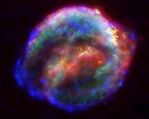
Subject Index / Science / Physics / Space (Astronomy)
About this schools Wikipedia selection
SOS Children has tried to make Wikipedia content more accessible by this schools selection. Visit the SOS Children website at http://www.soschildren.org/


SOS Children has tried to make Wikipedia content more accessible by this schools selection. Visit the SOS Children website at http://www.soschildren.org/
